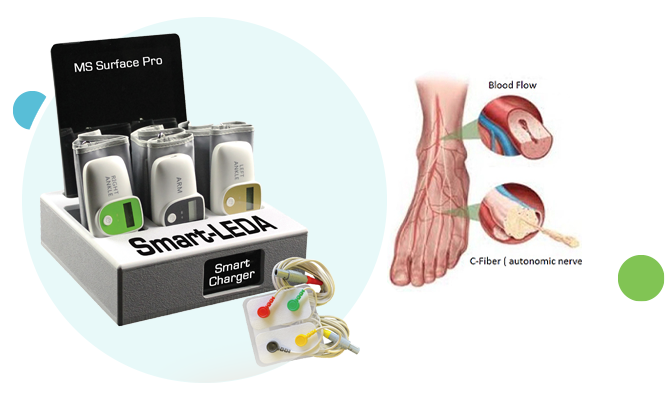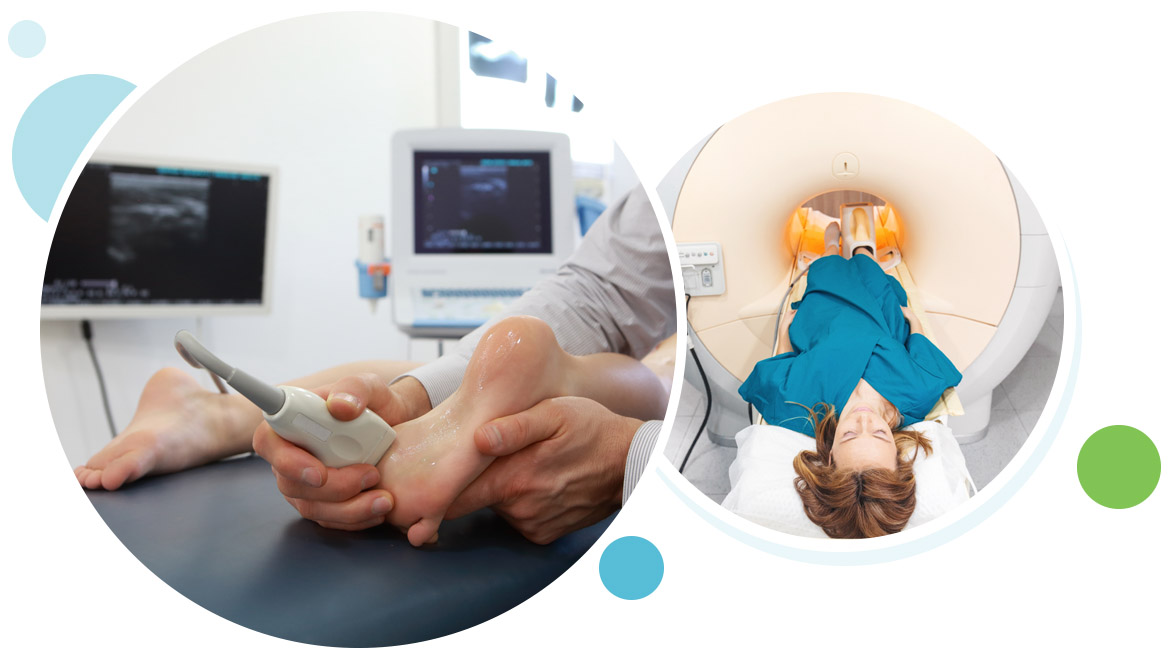On Site Imaging and Expert Care.
Diagnostic Modalities and Imaging Technology:
Get complete care including all necessary medical imaging services on site at our complete foot care facility. Northstate understands the difficulty that patients experience when they’re sent out for lab tests and imaging. When you are having mobility issues the last thing you want is to have told to leave the care of your doctor and travel for x-rays. We believe complete care means enabling our podiatrists and lab technicians with the most effective technology so they can properly assess bone structure, joint health, vascular health and the musculoskeletal relationships of the foot and ankle. That’s why we offer a full range of imaging modalities on-site to ensure that you receive an accurate diagnosis of your condition all while experiencing the comfort and care of Northstate Foot and Ankle.
Foot conditions can be as unique as the people that suffer from them. That means that different conditions require different tools so our doctors can examine images of the hard and soft tissues or determine the condition of the vascular system of the lower extremities. Take a look below to learn more about the specific imaging technology that our podiatrists depend on for accurate diagnosis.
Click the tabs below to learn more about the types of on-site medical imaging services we provide at our state of the art facilities in Chico and Redding.
MRI For Lower Extremities
Magnetic Resonance Imaging (MRI) is widely and safely used to help our doctors view the soft tissues of the foot and ankle. This is most commonly used to detect issues including:
- Soft tissue damage affecting tendons, ligaments, cartilage and muscle
- Arthritic joint conditions
- Tumors, ulcers or cysts
- Osteonecrosis, especially in cases of Charcot foot or with diabetic foot care
- Post surgical recovery and follow up
Northstate uses a lower extremity MRI that does not require a full body scan and avoids uncomfortable issues associated with claustrophobia. This design allows convenient access to insightful images of your foot condition and ease of use for our doctors, allowing us to schedule tests and obtain results quickly. That helps us deliver on our goal to provide the best care possible and convenience for the patient.
While MRI’s are helpful for a wide range of imaging needs, there are concerns that your doctor will discuss with you prior to ordering the tests. For instance pregnancy, implants, pacemakers and certain medical conditions may be cause to avoid the high level of magnetism used in an MRI. If those factors are present, another imaging modality may be used.
Foot and Ankle X-Rays
An x-ray or a radiograph is another imaging technology that podiatrists will use primarily to examine the structures of the hard tissues (bones) in your foot and ankle. These are often most useful in determining the presence of conditions such as:
- Flatfoot
- Arthritis
- Charcot Foot
- Bunions
- Hammertoes
- Heel Spurs
- Fractures
- Foot and Ankle Trauma
By quickly ordering and conducting x-rays our medical staff can diagnose and prepare a treatment plan that effectively addresses the conditions that we find.
Ultrasound
Foot and ankle pain is often attributed to overuse and minor injuries that are consistently aggravated. The types of injury that ultrasound can help assess commonly occur as sports injuries, especially hikers and runners. These images may also be helpful in determining the state of occupational injuries that occur from repetitive motion. If your doctor suspects that one of the following conditions may be the cause of your pain, they may order an ultrasound:
- Achilles Tendonitis
- Plantar Fasciitis
- Plantar Fascia Tears
- Ruptured Tendons
- Morton’s Neuroma
Ultrasound is often a preferred imaging technology over MRI due to reduced costs, despite MRI providing better image quality. If your podiatrist suspects the cause of your pain is one of the above conditions, they may recommend it. From there they can determine the significance of the injury and recommend physical therapy, orthotics or other non-surgical treatments. If the injury looks to be more extreme such as a torn tendon, surgery may be needed.
Smart – LEDA Neurovascular Testing
The Smart-LEDA technology at Northstate Foot & Ankle Specialists utilizes innovative techniques to bring two tests into one! The ABI (Ankle Brachial Index) test can help measure stenosis or narrowing of arterial walls, while the Sudomotor function test can detect small fiber neuropathy in your feet. These tests can help the doctor assign a quantitative value to the symptoms you are experiencing. Depending on the results, your physician at Northstate Foot & Ankle Specialists can decide to order one of our ABI/TBI vascular tests, or possibly refer you to the appropriate specialists for further workup. This makes the Smart-LEDA test one of the best screening modalities at Northstate Foot & Ankle Specialists.
These two tests are combined into one service which takes approximately 3-5 minutes to perform, while providing a patient friendly report. If you are experiencing pain, numbness, tingling, pins-and-needles, burning in feet, leg pain after exertion, or dizziness contact Northstate Foot & Ankle Specialists for a consultation today with our Smart-LEDA technology!

ABI/TBI Tests for Vascular Foot Health & Diabetes
The ABI/TBI test stand for the Ankle brachial index/Toe brachial index. This is used to measure the presence of peripheral arterial disease (PAD), which is prevalent in patients with diabetes, or other conditions that impact circulatory system and vascular health. These tests effectively help our doctors to determine the stage of any blood flow issues occurring in the lower extremities. The TBI test is often used with patients that are experiencing hardened arteries since the blood flow in the toes is not affected as dramatically as it is in the foot. Foot problems may progress as PAD occurs, most commonly as a symptom of diabetes, kidney disease or simply from aging.
By utilizing ABI/TBI testing the podiatrists at Northstate can effectively prepare a treatment plan to slow the progression of serious foot conditions, and make further recommendations when more significant issues may exist.
Have more questions about our imaging processes? Contact our friendly staff or book an appointment here.

